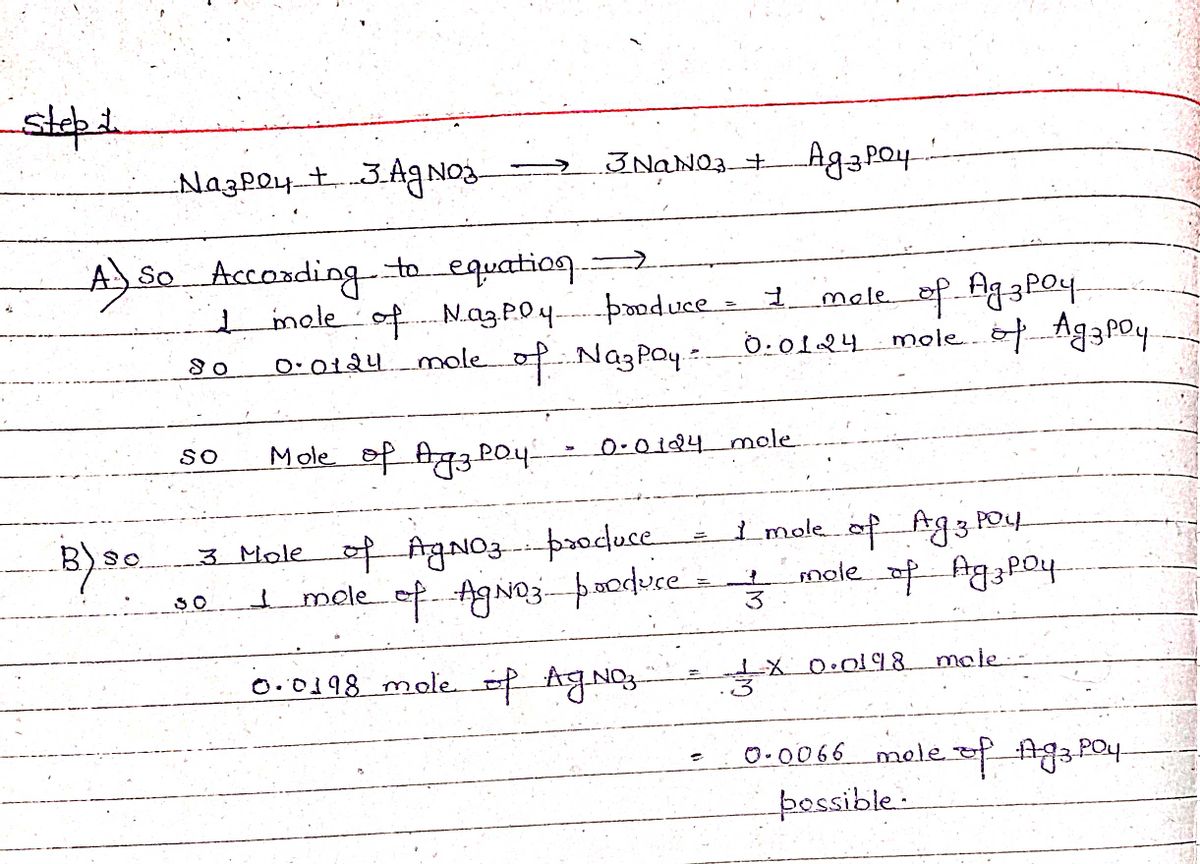States of Matter
The substance that constitutes everything in the universe is known as matter. Matter comprises atoms which in turn are composed of electrons, protons, and neutrons. Different atoms combine together to give rise to molecules that act as a foundation for all kinds of substances. There are five states of matter based on their energies of attraction, namely solid, liquid, gases, plasma, and BEC (Bose-Einstein condensates).
Chemical Reactions and Equations
When a chemical species is transformed into another chemical species it is said to have undergone a chemical reaction. It consists of breaking existing bonds and forming new bonds by changing the position of electrons. These reactions are best explained using a chemical equation.
Na3PO4 (aq) + 3 AgNO3 (aq) → 3 NaNO3 (aq) + Ag3PO4 (s)
In this reaction, 0.0124 mol of Na3PO4 reacts with 0.0198 mol of AgNO3. The actual yield of Ag3PO4 formed is 1.07 g. Calculate the theoretical yield (g) and % yield of Ag3PO4.
SHOW WORK. Write out the problem on paper showing all conversion factors, unit cancellations, calculations, s.f., etc. Answer the questions related to the setup and calculation for this problem. Be sure to use our periodic table to calculate any molar masses needed (rounded to proper number of decimal places), otherwise your values might be slightly off and answers may be marked as incorrect. Abbreviate units as follows: grams = g, moles = mol
Starting with Na3PO4
Calculate how many mol of Ag3PO4 are possible: mol
Use the three blanks to enter the number, unit, and substance (in this order) that appears in the numerator of the stoichiometry conversion factor.
Starting with AgNO3
Calculate how many mol of Ag3PO4 are possible: mol
Use the three blanks to enter the number, unit, and substance (in this order) that appears in the denominator of the stoichiometry conversion factor.
Determine the theoretical yield of Ag3PO4, in g, and enter the value in the blank:
Theoretical yield: g
Enter the chemical formula for the limiting reactant.
Limiting reactant:
Calculate the % yield: %

Step by step
Solved in 2 steps with 2 images









